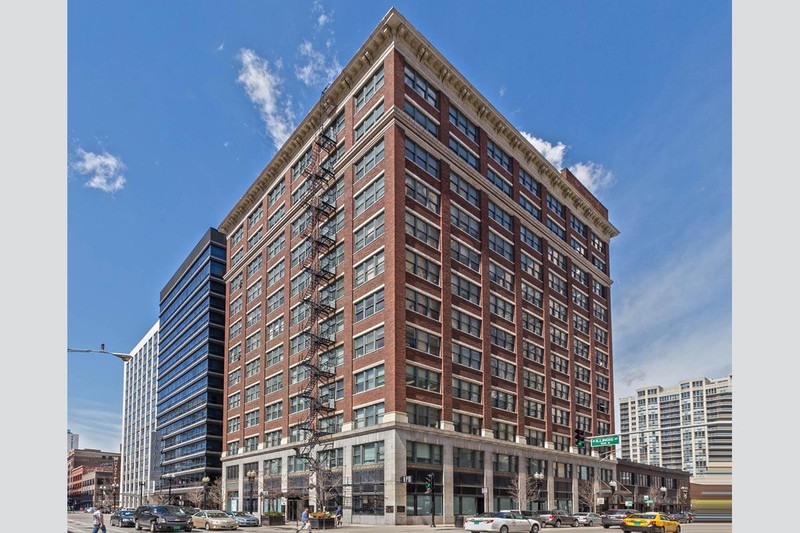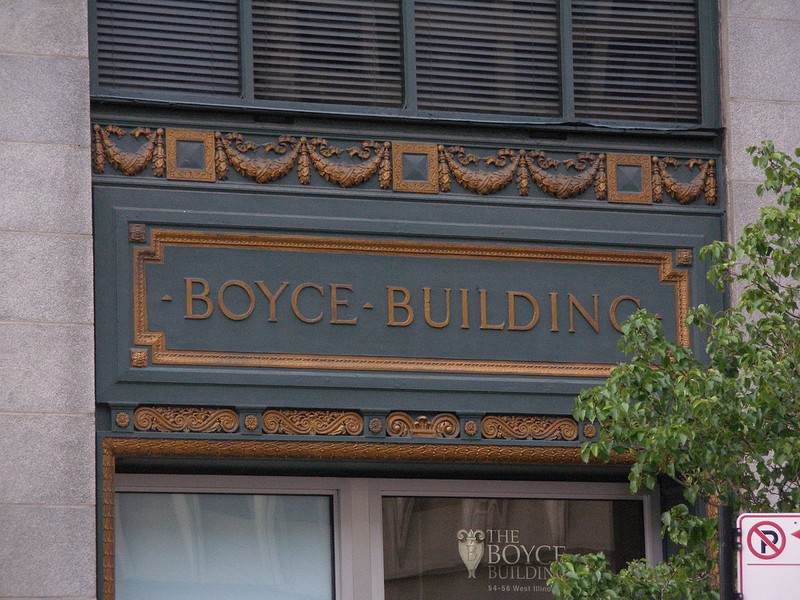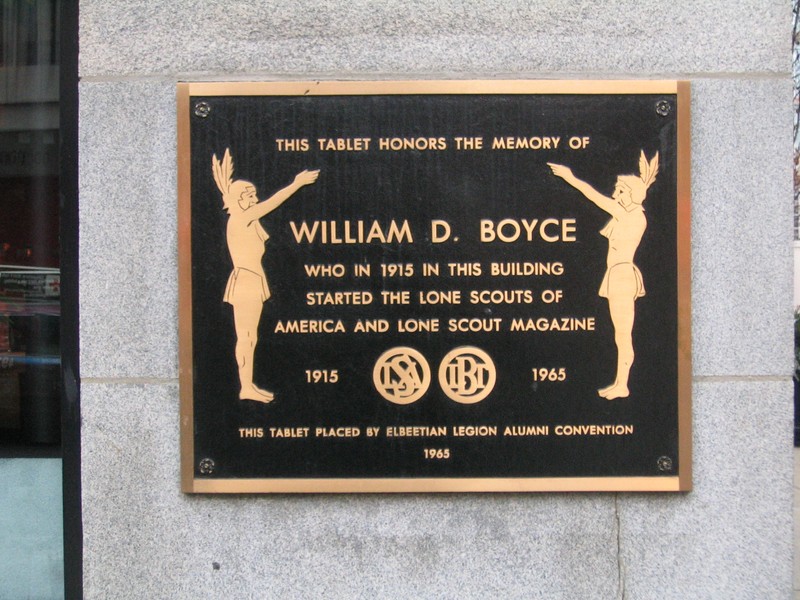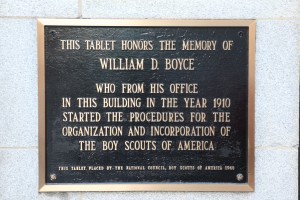Boyce Building
Introduction
Text-to-speech Audio
Images
Boyce Building. Photo Credit: friedmanproperties.com

Photo Credit: https://en.wikipedia.org/wiki/William_D._Boyce#/media/File:BoyceBuildingFront.jpg

By Sarah from Chicago, Illinois, USA - Boyce building, CC BY 2.0, https://commons.wikimedia.org/w/index.php?curid=5121557

Plaque at 500 N. Dearborn commemorating William D. Boyce. Photo Credit: Peter V. Bella

Backstory and Context
Text-to-speech Audio
An avid hunter, traveler, and progressive, Boyce was an acquaintance of Teddy Roosevelt as they shared a love for hunting and camping, which was understood to be a way of reclaiming the lost spirit of the "closed" American frontier.1 Today, hunting and camping are a big part of the Boy Scouts of America, but there is more to the organization than just an appreciation of the outdoors. According to the Boy Scouts of America:
In 1909, Chicago publisher William D. Boyce lost his way in a dense London fog. A boy came to his aid and, after guiding the man, refused a tip, explaining that as a Scout he would not take a tip for doing a Good Turn. This gesture by an unknown Scout inspired a meeting with Robert Baden-Powell, the British founder of the Boy Scouts. As a result, William Boyce incorporated the Boy Scouts of America on February 8, 1910. He also created the Lone Scouts, which merged with the Boy Scouts of America in 1924.
One key aspect of the need for a return to hunting, rather than remaining locked in urban life, was an idea that hunting and camping was "manly,"2 However, Boyd's progressive attitudes included championing the rights of women and laborers, noted by his public support for his newsboys' well-being.
During World War One, Boyce traveled to Europe on the British luxury liner Lusitania, three months before the Germans supposedly torpedoed it, subsequently pushing the U.S. to enter the war. He also traveled to Africa twice and spent a year in South America, all part of his many journeys throughout the world. He wrote about many of those journeys, which were published by Rand McNally & Company.3
It is believed that Boyce was worth $20 million in 1916 (more than $440 million in 2016). He died in 1929 prior to the stock market crash. As a result, his fortunes were not able to be sustained by his heirs, which may also be why his historical popularity did not rise to the levels of entrepreneurs such as Rockefeller and Guggenheim. Nonetheless, his legacy as one of the leaders of the Boy Scouts lives on, notably through the Boyce Building in Chicago and plaques that adorns its outside walls.
Cite This Entry
Martin-Gross, Kalen and Mathew Powers. "Boyce Building." Clio: Your Guide to History. December 31, 2018. Accessed July 29, 2025. https://theclio.com/entry/26733
Sources
2 John R. Reiger: American Sportsman and the Origins of Conservation, Third Edition (Corvallis, OR: Oregon State University Press), 148-151.
3 Janice A. Petterchak, Lone Scout: W. D. Boyce and American Boy Scouting (Ann Arbor: Legacy Press, 2003). 49-61.Tatum, Raymond Terry. National Register of Historic Places Registration Form. Illinois Historic Preservation Agency. February 29, 1996. December 12, 2018. http://gis.hpa.state.il.us/pdfs/201033.pdf.

